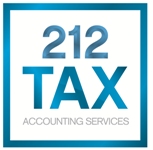Several different types of retirement plan – 401(k), defined benefit, and profit-sharing – can be made to suit a prosperous small business or professional practice. But if yours is a really small business such as a home-based, start-up, or sideline business, maybe you should consider adopting a SIMPLE IRA plan.
A SIMPLE IRA plan is a type of retirement plan specifically designed for small business and is an acronym for “Savings Incentive Match Plans for Employees.” SIMPLE IRA plans are intended to encourage small business employers to offer retirement coverage to their employees but work just as well for self-employed persons without employees.
SIMPLE IRA plans contemplate contributions in two steps: first by the employee out of salary, and then by the employer, as a “matching” contribution (which can be less than the employee contribution). Where SIMPLE IRA Plans are used by self-employed persons without employees – as IRS expressly allows – the self-employed person is contributing both as employee and employer, with both contributions made from self-employment earnings.
Note: One form of SIMPLE IRA plan allows employer contributions without employee contributions. The ceiling on contributions, in this case, makes this SIMPLE IRA Plan option unattractive for self-employed individuals without employees.
Note: To establish a SIMPLE IRA Plan you:
- Must have 100 or fewer employees.
- Cannot have any other retirement plans.
- Need to annually file a Form 5500.
- Employees must earn $5,000 a year.
A quick list of pros and cons:
- Plan is not subject to the discrimination rules that everyday 401(k) plans are.
- Employees are fully vested in all contributions.
- Straightforward benefit formula allows for easy administration.
- Optional participant loans and hardship withdrawals add flexibility for employees.
- No other retirement plans can be maintained.
- Withdrawal and loan flexibility adds administrative burden for the employer.
How Much You Can Put in and Deduct
Those with relatively modest earnings will find that a SIMPLE IRA Plan lets them contribute (invest) and deduct more than other plans. With a SIMPLE IRA Plan, you can put in and deduct some or all of your self-employed business earnings. The limit on this “elective deferral” is $12,500 in 2016 (same as 2015).
If your earnings exceed that limit, you could make a modest further deductible contribution–specifically, your matching contribution as an employer. Your employer contribution would be 3 percent of your self-employment earnings, up to a maximum of the elective deferral limit for the year. So employee and employer contributions for 2016 can’t total more than $25,000 ($12,500 maximum employee elective deferral, plus a maximum $12,500 for the employer contribution.)
Catch up contributions. Owner-employees age 50 or over can make a further deductible “catch up” contribution as employee of $3,000 in 2016 (same as 2015).
Example: An owner-employee age 50 or over in 2016 with self-employment earnings of $40,000 could contribute and deduct $12,500 as employee plus an additional $3,000 employee catch up contribution, plus a $1,200 (3 percent of $40,000) employer match, for a total of $16,700.
Low-income owner-employees in SIMPLE IRA Plans may also be allowed a tax credit up to $2,000 in 2016 for single filers ($4,000 married filing jointly). This is known as the “Saver’s Credit” and income must not be more than $61,500 for married filing jointly, $30,750 for singles and $46,125 for heads of household.
SIMPLE IRA plans are an excellent choice for home-based businesses and ideal for full-time employees or homemakers who make a modest income from a sideline business.
If living expenses are covered by your day job (or your spouse’s job), then you would be free to put all of your sideline earnings, up to the ceiling, into SIMPLE IRA plan retirement investments.
An individual 401(k) plan, however, could allow you to contribute more, often much more, than SIMPLE IRA Plan. For example, if you are less than 50 years old with $50,000 of self-employment earnings in 2016, you could contribute $12,500 to your SIMPLE IRA PLAN plus an additional 3 percent of $50,000 as an employer contribution, for a total of $14,000. A 401(k) plan would allow a $31,000 contribution.
With $100,000 of earnings, the total for a SIMPLE IRA Plan would be $15,500 and $43,500 for a 401(k).
Withdrawal: Easy, but Taxable
There’s no legal barrier to withdrawing amounts from your SIMPLE IRA Plan, whenever you please. There can be a tax cost, though: Besides regular income tax, the 10 percent penalty tax on early withdrawal (generally, withdrawal before age 59 1/2) rises to 25 percent on withdrawals in the first two years the SIMPLE IRA Plan is in existence.
A SIMPLE IRA Plan
A SIMPLE IRA Plan really is a “simple” plan to set up and operate than most other plans. Contributions go into an IRA that you set up. Those already familiar with IRA rules investment options, spousal rights, and creditors’ rights don’t have a lot new to learn.
Requirements for reporting to the IRS and other agencies are negligible, at least for you, the self-employed person. Your SIMPLE IRA Plan’s trustee or custodian, typically an investment institution, has reporting duties and the process for figuring the deductible contribution is a bit simpler than with other plans.
What’s Not So Good about SIMPLE IRA Plans
We’ve seen that other plans can do better than SIMPLE IRA Plan once self-employment earnings become significant. Other not-so-good features include the following:
Because investments are through an IRA, you’re not in direct control. You must work through a financial or other institution acting as trustee or custodian, and will in practice have fewer investment options than if you were your own trustee, as you could be in a Keogh. For many self-employed individuals, however, this won’t be an issue. In this respect, a SIMPLE IRA Plan is like the SEP-IRA.
Other plans for self-employed persons allow a deduction for one year (say 2016) if the contribution is made the following year (2017) before the prior year’s (2016) return is due (April 2017 or later extensions). This rule applies to SIMPLE IRA Plans, for the matching (3 percent of earnings) contribution you make as an employer. But there’s no IRS pronouncement on when the employee’s portion of the SIMPLE IRA Plan is due where the only employee is the self-employed person. Those who want to delay contribution would argue that they have as long as it takes to compute self-employment earnings for 2016 (though not beyond the 2016 return due date, with extensions).
Tip: The sooner your money goes in the plan, the longer it’s working for you tax-free. So delaying your contribution isn’t the wisest financial move.
You can’t set up the SIMPLE IRA Plan after the year ends and still get a deduction for that year, as is allowed with SEPs. Generally, to make a SIMPLE IRA Plan effective for the year it must be set up by October 1 of that same year. A later date is allowed where the business is started after October 1. In this instance, the SIMPLE IRA Plan must be set up as soon thereafter as administratively feasible.
Then there’s this problem if the SIMPLE IRA Plan is intended for a sideline business and you’re already in a 401(k) plan in another business or as an employee. In this scenario, the total amount you can put into the SIMPLE IRA Plan and the 401(k) plan combined can’t be more than $18,000 in 2016 (same as 2015)–$23,500 if catch-up contributions are made to the 401(k) by one age 50 or over.
Here’s an example: If someone who is less than age 50 puts $9,000 in her 401(k), he or she can’t put more than $9,000 in her SIMPLE IRA Plan in 2016. The same limit applies if you have a SIMPLE IRA Plan while also contributing as an employee to a “403(b) annuity” (typically for government employees and teachers in public and private schools).
How to Get Started in a SIMPLE IRA Plan
You can set up a SIMPLE IRA Plan on your own by using IRS Form 5304-SIMPLE IRA PLAN or Form 5305-SIMPLE IRA PLAN, but most people turn to financial institutions. SIMPLE IRA Plans are offered by the same financial institutions that offer IRAs and 401(k) plans.
You can expect the institution to give you a plan document (approved by IRS or with approval pending) and an adoption agreement. In the adoption agreement, you will choose an “effective date,” which is the beginning date for payments out of salary or business earnings. Remember, that date can’t be later than October 1 of the year you adopt the plan, except when a business is formed after October 1.
Another key document is the Salary Reduction Agreement, which briefly describes how money goes into your SIMPLE IRA Plan. You need such an agreement even if you pay yourself business profits rather than salary.
Printed guidance on operating the SIMPLE IRA Plan may also be provided. You will also be establishing a SIMPLE IRA Plan account for yourself as a participant.
Keoghs, SEPs and SIMPLE IRA Plans Compared For 2016
| Keogh | SEP | SIMPLE IRA PLAN |
| Plan type: Can be defined benefit or defined contribution (profit-sharing or money purchase) | Defined contribution only | Defined contribution only |
| Owner may have two or more plans of different types, including a SEP, currently or in the past | Owner may have SEP and Keoghs | Generally, SIMPLE IRA PLAN is the only current plan |
| Plan must be in existence by the end of the year for which contributions are made | Plan can be set up later–if by the due date (with extensions) of the return for the year contributions are made | Plan generally must be in existence by October 1st of the year for which contributions are made |
| Dollar contribution ceiling (for 2016): $53,000 for defined contribution plan; no specific ceiling for defined benefit plan | $53,000 | $25,000 |
| Percentage limit on contributions: 50% of earnings, for defined contribution plans (100% of earnings after contribution). Elective deferrals in 401(k) not subject to this limit. No percentage limit for defined benefit plan. | 50% of earnings (100% of earnings after contribution). Elective deferrals in SEPs formed before 1997 not subject to this limit. | 100% of earnings, up to $12,500 for 2016 for contributions as employee; 3% of earnings, up to $12,500 for contributions as employer |
| Deduction ceiling: For defined contribution, lesser of $53,000 or 20% of earnings (25% of earnings after contribution). 401(k) elective deferrals not subject to this limit. For defined benefit, net earnings. | Lesser of $53,000 or 20% of earnings (25% of earnings after contribution). Elective deferrals in SEPs formed before 1997 not subject to this limit. | Maximum contribution $12,500 (in 2016) |
| Catch up contribution 50 or over: Up to $6,000 in 2016 for 401(k)s | Same for SEPs formed before 1997 | Half the limit for Keoghs, SEPs (up to $3,000 in 2016) |
| Prior years’ service can count in computing contribution | No | No |
| Investments: Wide investment opportunities. Owner may directly control investments. | Somewhat narrower range of investments. Less direct control of investments. | Same as SEP |
| Withdrawals: Some limits on withdrawal before retirement age | No withdrawal limits | No withdrawal limits |
| Permitted withdrawals before age 59 1/2 may still face 10% penalty | Same as Keogh rule | Same as Keogh rule except penalty is 25% in SIMPLE IRA PLAN Plan’s first two years |
| Spouse’s rights: Federal law grants spouse certain rights in owner’s plan | No federal spousal rights | No federal spousal rights |
| Rollover allowed to another plan (Keogh or corporate), SEP or IRA, but not a SIMPLE IRA PLAN. | Same as Keogh rule | Rollover after 2 years to another SIMPLE IRA PLAN and to plans allowed under Keogh rule |
| Some reporting duties are imposed, depending on plan type and amount of plan assets | Few reporting duties | Negligible reporting duties |
Request a Consultation
We are able to work with your unique schedule including after-hour appointments, most weeknights, and weekends.
Call to action
Build Growth Opportunities with Extensive Business Financial Services
We serve clients in a range of industries, including hospitality, nightlife, real estate, legal, and medical.


